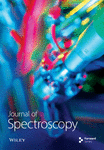13C and 15N NMR shieldings of 1,2,4-diazaphospholes in the solid state and in solution
Abstract
The solid state 13C and 15N CPMAS NMR spectra of 3,5-di-tert-butyl-1,2,4-diazaphosphole 4 and 3,5-diphenyl-1,2,4-diazaphosphole 5 have been recorded. The X-ray structure of the first compound was already known (it is a cyclic dimer with localized N–H protons) while the structure of the second cannot be determined due to the difficulty to grow suitable single crystals. NMR results pointed out that 4 is a “classical” compound while 5 is probably a tetramer showing Intermolecular Solid-State Proton Transfer (ISSPT). GIAO/ab initio calculations have been carried out to estimate the absolute 1H, 13C and 15N shieldings. The agreement with the experimental chemical shifts is good enough to assign the signals of carbons C-3 and C-5.




